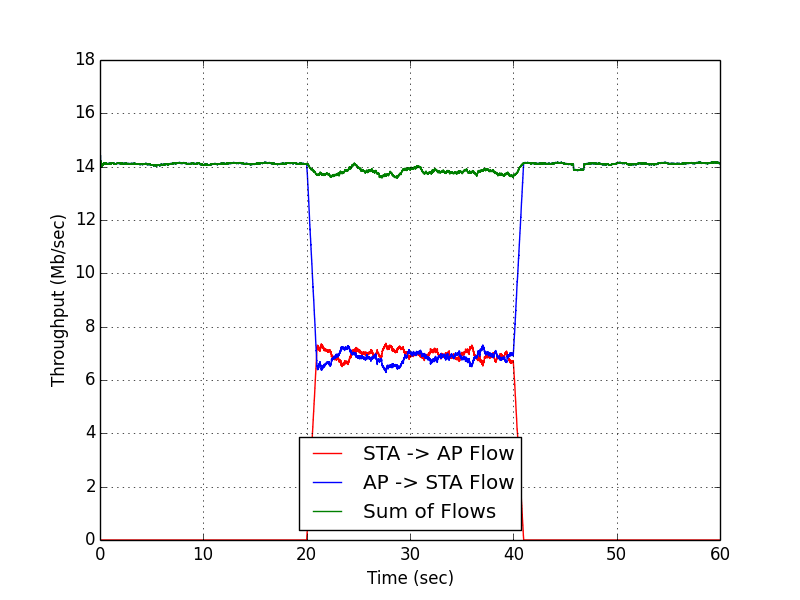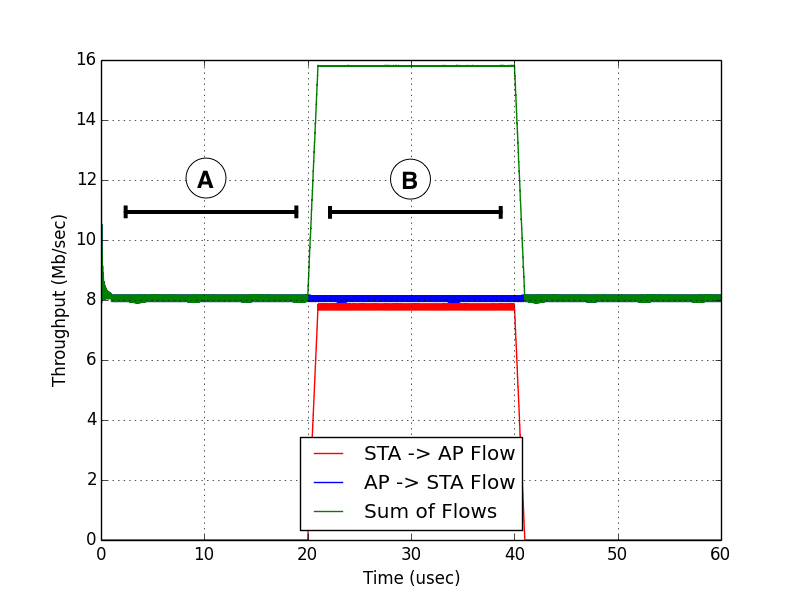| Version 2 (modified by chunter, 9 years ago) (diff) |
|---|
Tutorial: A Custom Scheduled MAC
based on Ref. Des. v1.3
802.11 Reference Design
- Download
- Changelog
- FAQ
- Architecture
Using the Design
Benchmarks
- IFS Calibration
- Throughput
- Transmitter Characterization
- Receiver Characterization
- Pkt. Det. Min. Power Characterization
MAC
Upper-level
Lower-level
- PHY
Experiments Framework
- Packet Flow
- FPGA Architecture
- FPGA Resource Usage
- App Notes
- Other Resources
- License
- Changelog
Characterizing TokenMAC
Now that we have built TokenMAC, we should characterize the design and identify strengths and weaknesses. There are many ways to do this. Our modifications were minimal in CPU_HIGH. All of the existing structure high-level frameworks will "just work" with our new TokenMAC. So, for example,
- We could simply connect our AP to the Internet via Ethernet and connect our STA to a computer via Ethernet. We will then be able to access the Internet from our computer through TokenMAC. While this would work, it would not provide any visibility into the operation of TokenMAC, so it would be difficult to conclude anything on the merits or demerits of the design.
- Better yet, we can use the existing WLAN Experiments Framework to construct an experiment and analyzer detailed logs of all transmission and receptions. This will provide deep visibility into the per-packet behavior of the design.
Two Node, Two Flow Characterization
In this section, we will use two existing wlan_exp examples: txrx_log_capture and txrx_log_analysis. Together, these examples set up and analyze a two node, two flow traffic pattern that is broken up into three 20-second phases:
- In the first 20 seconds, the AP node starts a backlogged traffic source directed to the STA node.
- In the second 20 seconds, the STA node starts a backlogged traffic source directed at the AP. During this time, the AP's existing traffic flow is left on, so both the AP and the STA are contending for the medium.
- In the final 20 seconds, the STA node disables its traffic source and only the AP continues to contend for the medium.
For comparison sake, we will run this experiment for both the standard 802.11 unmodified design as well as our custom TokenMAC design.
 | 
|
| Standard 802.11 | TokenMAC |
Clearly, there are some striking differences between the operation of the standard 802.11 MAC and our TokenMAC extension. These differences are:
*